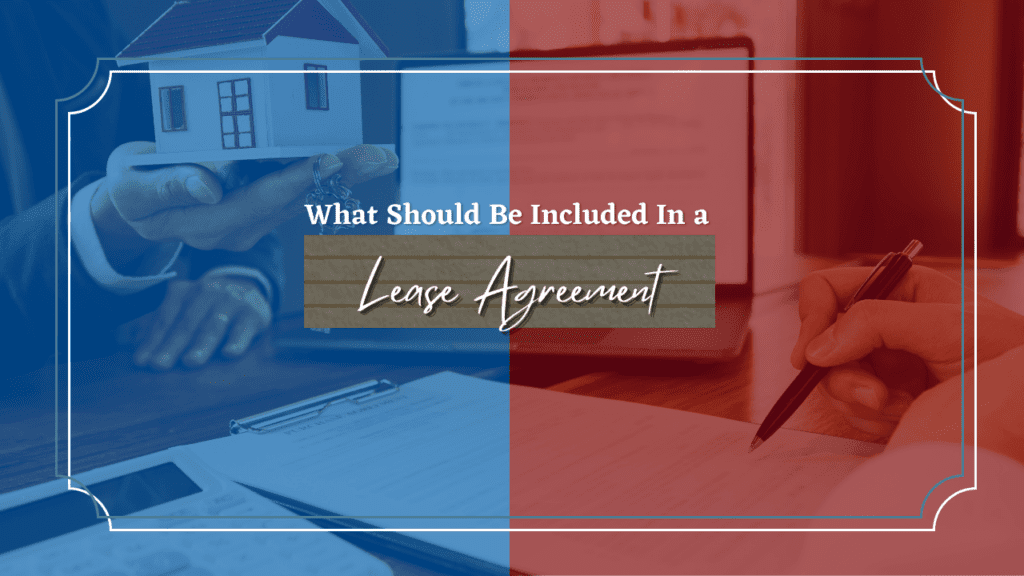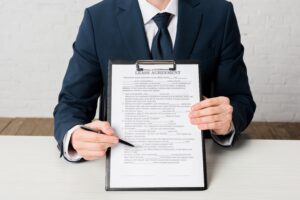
It’s simply impossible to effectively and safely rent out a home in San Francisco without a strong lease agreement.
Your lease is in place to protect you. It also protects your tenants and the property itself.
San Francisco isn’t like other rental markets, and you’ll need a lease agreement that meets the legal requirements of the state as well as the city. California has some specific requirements for what you need to include in a lease, and you want to make sure it’s legally enforceable.
The city itself has some specific requirements when it comes to security deposits and interest as well as rent control and eviction. You want to have your lease reviewed by a property manager and/or an experienced attorney who understands landlord and tenant law.
Don’t copy any lease agreement sample you find on the internet. Downloading a generic lease agreement will not give you the protection you need.
Most rental property owners will take a template and customize the lease agreement to reflect the unique property that’s being rented out. Specifics are fine, but there are also some general topics that every San Francisco lease must cover.
Here are the most important things to include.
Contact Information and Instructions in Lease Agreements
There are obvious and basic inclusions that should be immediately found in your lease agreement, whether you’re renting out a unit in a multifamily building or a single-family home in an HOA neighborhood.
- Identify Landlords, Tenants, and Property Managers
The first thing your lease agreement should do is identify the parties signing the lease agreement.
Start with the people who are living on your property. List all the tenants, starting with the adults who are financially and legally accountable to the lease. Include the names and contact information for all of your tenants who have been screened and approved for residency. Then, add any additional occupants who aren’t necessarily responsible financially, such as children. You can include names and ages. They’ll be listed as occupants rather than tenants.
After identifying the residents, your lease agreement must include the name of the property owner or owners. When you’re working with a San Francisco property manager, it’s critical to include their name and contact information. That’s the person tenants will want to reach if something goes wrong.
Make sure the lease establishes that only the listed tenants are permitted to live in the property. You don’t want to invite unauthorized residents to move in when they have not been screened. You can set up a guest policy or set a limit on how many days and nights a guest can stay before they’re considered a tenant and subject to screening and inclusion in the lease agreement.
- Start and End Date of the Lease and Renewal Terms
Your lease needs a start date and an end date. Most lease agreements are one-year long, but you may signing an 18-month lease or even a two-year lease.
After you’ve established the time frame for the lease agreement, specify what happens at the end of the lease term. In some cases, the agreement switches automatically to a month-to-month tenancy. Or, you might require that the tenant signs a renewal or vacates. Indicate how much time is required for notice. It’s typically 60 days.
- Rent Collection Policies
Collecting rent on time is critical to the success of your investment. This is why it’s so important to include your rent collection policy in your lease agreement.
- Establish how much rent is due
- Establish when rent is due
- Provide information about grace periods. When is rent considered late?
- Explain late fees and penalties for late rent.
- Reference how rent should be paid. Online? By check? In person? Through the mail?
Security deposits should also be addressed, but we’ll talk about them in more detail later.
- Maintenance Responsibilities
You don’t want your tenant wondering who is responsible for maintaining the property when something breaks. Should they change light bulbs on their own? Are they responsible for checking the smoke detectors? Your lease should say exactly what’s expected of them.
Include language that explains who is responsible for what when it comes to maintenance, upkeep, and cleaning. This will eliminate any confusion with your tenants about what they’re expected to be doing and what they can expect you to take care of.
You’ll also want to use the lease agreement to outline the process for reporting maintenance. The lease should be clear about how maintenance is paid for. Typically, owners will take care of general maintenance, but if a resident or their guest causes a window to break or a toilet to backup, those damages will be billed to the tenant.
Security Deposits and San Francisco Lease Agreements
Security deposits must also show up in the lease agreement, and you need to understand the local and state laws to be sure your lease is accurate and legally compliant.
Mention any deposits that were paid, such as the security deposit. Reference how much was collected, where it’s being held, and what will have to be done at the end of the lease term in order for the tenants to receive a full refund of that deposit. If there’s a pet fee or additional move-in funds collected, document what was paid in the lease agreement.
San Francisco requires landlords to pay interest on the security deposits that are held. The amount is set by the Rent Board, and the rate is currently 2.3 percent. Interest has to be paid annually, typically on the date that the lease renews. If you don’t pay it annually, you need to make one larger payment within two weeks of your tenant vacating.
The lease should reflect the security deposit interest and the fact that the deposit and/or an accounting will be returned to the tenant within 21 days of moving out.
Rules and Regulations in San Francisco Lease Agreements
The lease should also include a list of rules and regulations that tenants must follow while they are residing at your property. Make sure to reference the following in your lease agreement:
- Pet policy. Pet-friendly properties are an excellent idea, especially when you want to avoid vacancy and earn more rent, but you need some restrictions and limitations to protect your investment. A pet policy should be included, which reflects how many pets you’ll allow and how large they can be. There should be breed restrictions. Your pet policy should include any pet fees, pet deposits, or pet rent.
- Smoking policy. We believe a no-smoking policy is the best way to protect the condition and integrity of your home.
- Reasons for entry. Your tenants have a right to privacy and the enjoyment of their home, and you cannot simply enter the property for no reason. An annual safety check might be necessary, and if you’re planning to conduct one, make sure it’s written into the lease. You’ll also want your lease to state that you can enter the property without notice if there’s an emergency.
- Any HOA rules and regulations that the tenant must follow, depending on the building or community you happen to be renting a property in.
Your lease agreement is also required to talk about rental increases. Since The Tenant Protection Act of 2019 was passed, landlords are now required to include information on the rent control law in their lease agreements. You’ll have to explain whether your property is included or exempt from the statewide rent control restrictions. Your lease must also note how often you can raise the rent and how much notice you’ll provide before the new rent goes into effect.
Addenda for California Lease Agreements
Most California leases will require some specific addenda, based on changing laws and local requirements. Cover yourself by referencing:
- Fireplaces – whether they’re allowed and what the safety and maintenance requirements are.
- Mold – tenants must understand how to prevent mold.
- Bedbugs – identifying bed bugs and minimizing the risk of infestation.
- Prop 65 – providing tenants with a “clear and reasonable warning” about hazardous materials or chemicals in the property.
- Lead-based paint disclosures
- Meghan’s Law
What to Avoid In Your Lease
 Now that you know what you should include in your lease agreement, do you know what you should not put in your lease?
Now that you know what you should include in your lease agreement, do you know what you should not put in your lease?
You cannot say that the security deposit is nonrefundable. Legally, it is refundable and must remain so.
You cannot require tenants to make repairs that aren’t their responsibility.
You cannot write into the lease agreement anything that allows the tenant to not pay rent (for example, the tenant makes minor repairs in exchange for a rent discount).
You cannot ask tenants to give up their right to respond to an eviction filed against them. You cannot say anything that could be perceived as discriminatory.
Writing your own lease agreement is risky. Work with an attorney or a professional San Francisco property manager. You want to make sure the lease covers everything it needs to. If you’d like some help putting together a strong lease agreement that more than does the job, please contact us at Sharevest Property Management. We’d be happy to help.